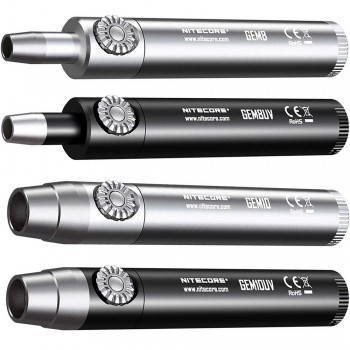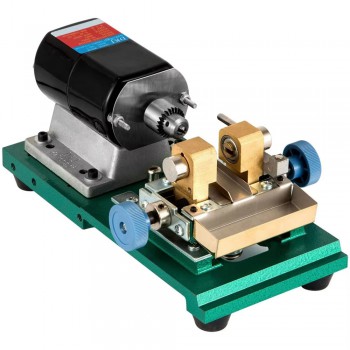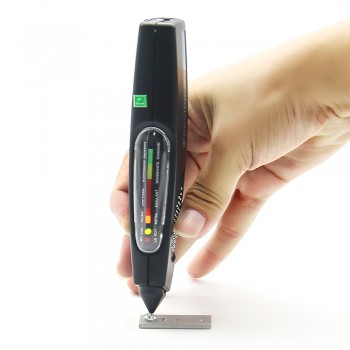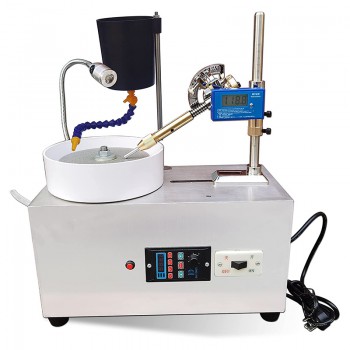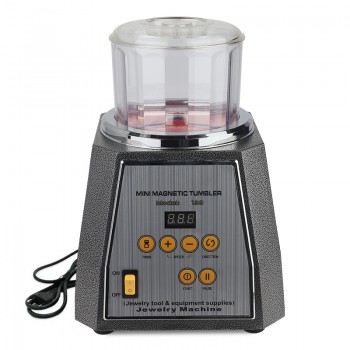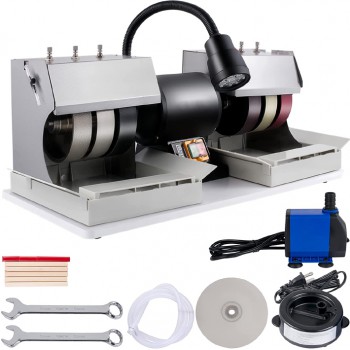
Lapidary Cabbing Machine
Guide on how to choose lapidary cabbing machine
What it is lapidary cabbing machine?
A lapidary cabbing machine (also called a gemstone cabbing cabochon machine) shapes and polishes slabs or rough into domed cabochons. It combines a motorized arbor with diamond wheels and a water feed to manage heat and debris.
How it works
Material is trimmed to preform, then progressed across diamond wheels from coarse to pre-polish and polish. Water or a mist system cools the stone and carries swarf. Wheel grits are typically arranged from 80/100 up to 3000+, followed by a polishing pad with oxide or diamond compound.
Core components
Motor & arbor: defines torque and wheel count.Wheels: metal-bond or resin-bond diamond in staged grits; add a soft expando drum for sanding belts if needed.
Water system: drip, recirculating pump, or direct line; look for independent valves per wheel.
Work rests & lighting: steady work surface and clear visibility.
Safety features: splash guards, GFCI-ready cord routing, and grounded chassis.
Machine formats & sizes
Two- to six-wheel rigs: select based on how many grit stages you want mounted at once.Compact units: a small lapidary cabbing machine fits limited benches or mobile setups.
Modular benches: accept add-on wheels, trim saws, or polishing laps on the same motor.
Wheel & accessory selection
Choose wheel diameters (commonly 6" or 8") to match stone size and hand span. Pair hard diamond wheels for shaping with soft resin or foam-backed wheels for smoothing. Keep a dedicated polish pad or leather/foam with aluminum oxide or diamond paste. Stock dressing sticks, splash pans, dop sticks, and wax.
Choosing by workload
Stone types: agate, jasper, quartz, obsidian, opal each respond to specific grits and polishes; match wheels and compound to the material set you process.Batch size: frequent cabbing benefits from multiple fixed grits to reduce wheel changes.
Stone size: larger pieces call for wider wheels and generous splash clearance.
Buying considerations
When browsing a lapidary cabbing machine for sale, review:Power & voltage: match shop supply; check amp draw.
Build & serviceability: wheel change access, sealed bearings, parts availability, and manual clarity.
Water management: drip rate control, tray capacity and drain routing.
Noise & vibration control: balanced arbor, isolation mounts, and rigid base.
Package contents: count of wheels included, grit sequence, and any polishing pads or compounds.
Setup and workflow tips
Position the gemstone cabbing cabochon machine at eye level for sightlines to the dome profile. Use water flow across each wheel face. Mark domes with a centerline to guide symmetry. Keep separate polish pads by compound to avoid cross-contamination.
Maintenance & care
Rinse pans and guards after each session. Dress wheels as recommended by the manufacturer to open diamond. Inspect cords, switches, and hoses. Store oxides and diamond paste sealed and labeled by grit.
Application scope
Use cases include single-stone cabochons for jewelry settings, matched pairs, inlay blanks, intarsia preforms, and small sculpted elements. With the right wheels and polish, the same platform supports agate, jasper, quartz family stones, feldspar, obsidian, and selected carbonates.
1
Showing 1 to 1 of 1 (1 Pages)


